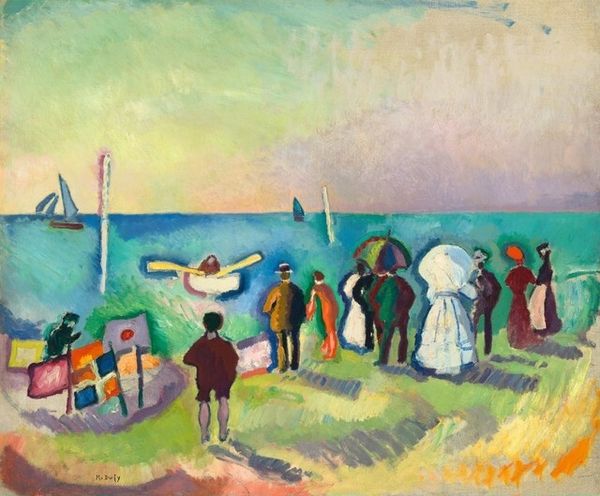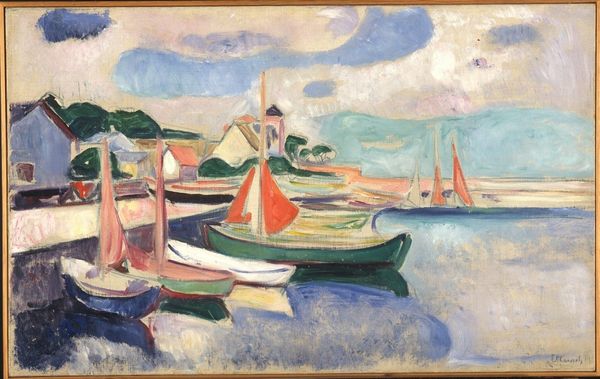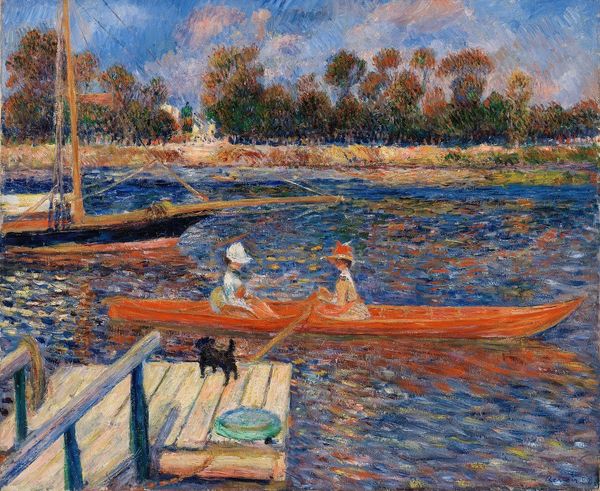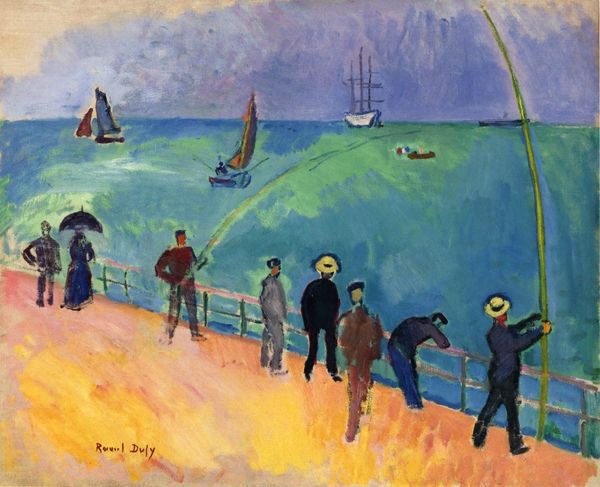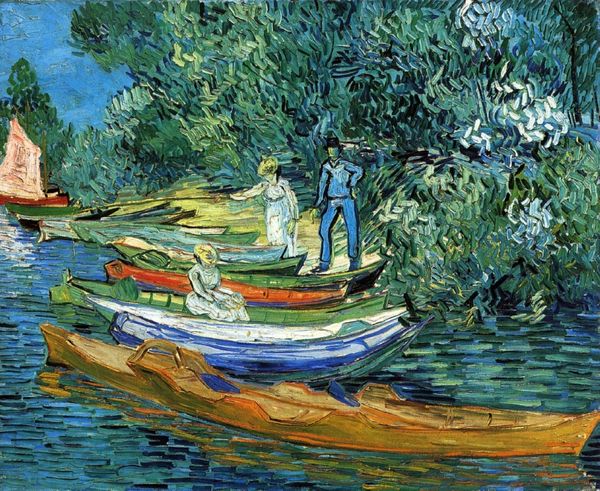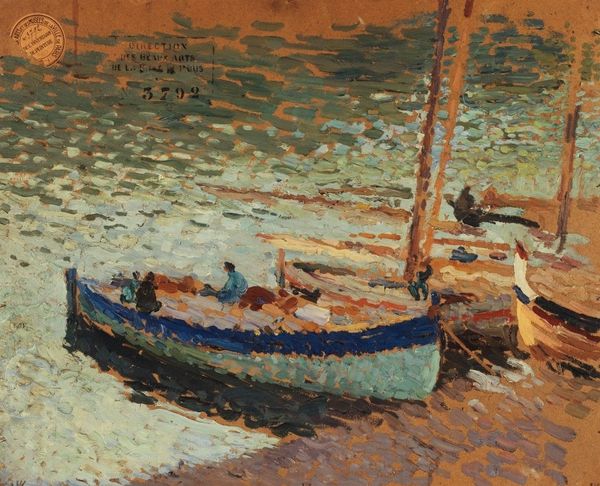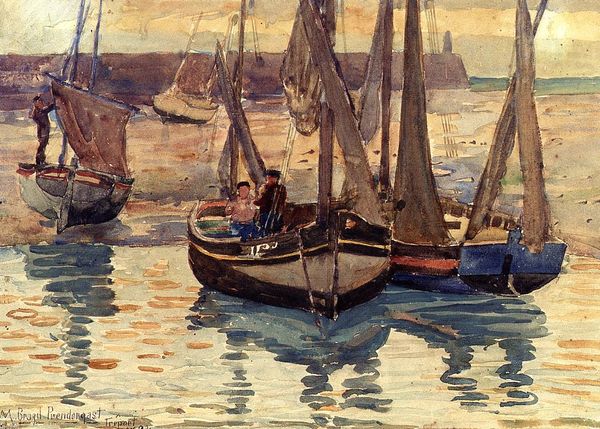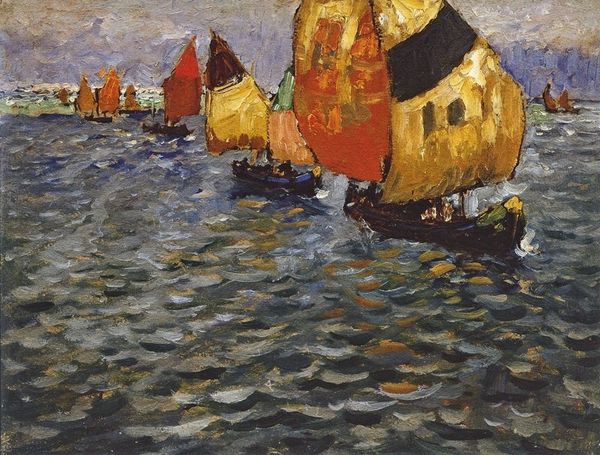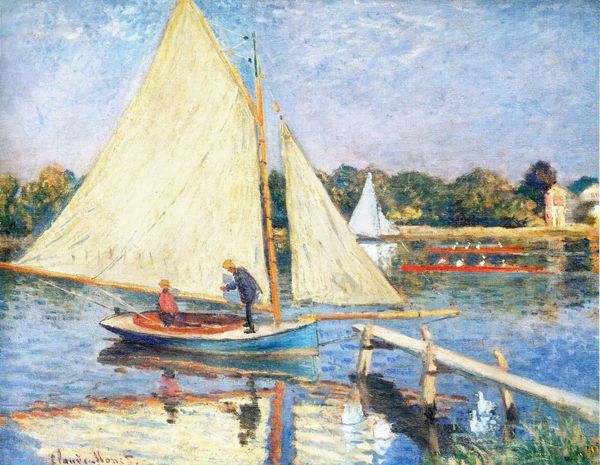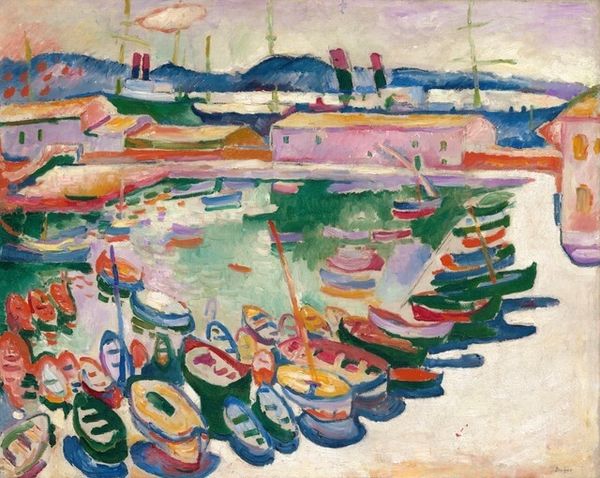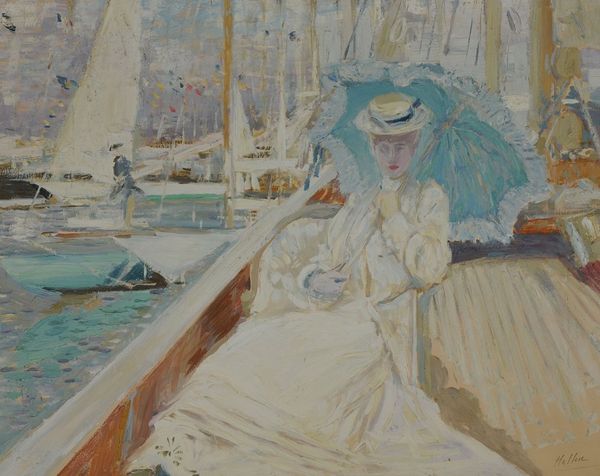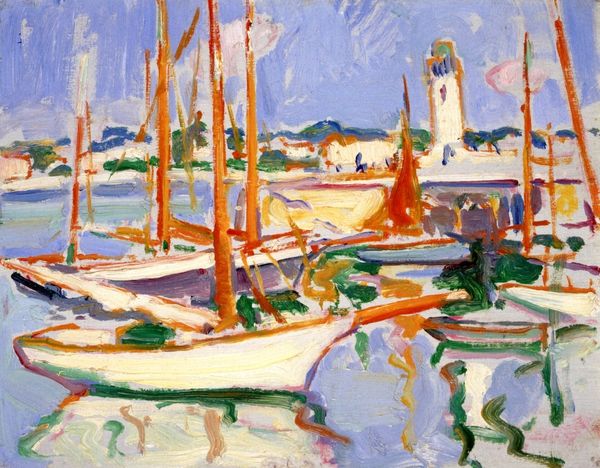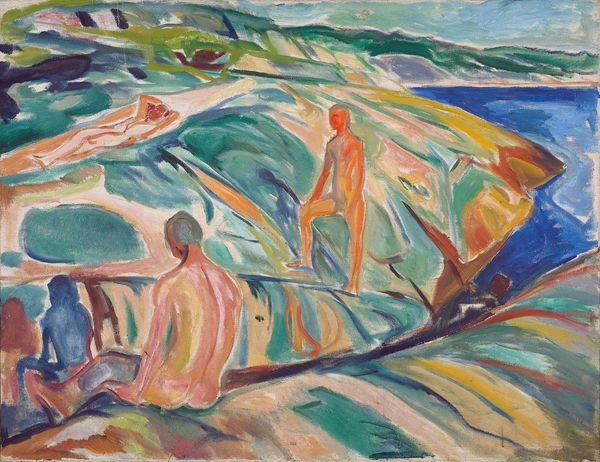
painting, oil-paint
#
boat
#
painting
#
oil-paint
#
landscape
#
oil painting
#
mountain
#
expressionism
#
cityscape
#
expressionist
Dimensions: 72 x 50.5 cm
Copyright: Public domain
Curator: This is August Macke's "Sailing boat on the Tegernsee," painted in 1910 using oil on canvas. Editor: Immediately, I'm struck by the contrasts—that intense, almost unnatural, yellow of the sails against the blues and greens of the water and hills. There's a quiet, dreamlike quality too, despite the bold color choices. Curator: The composition guides the eye in a dynamic way. The strong diagonal of the main sail juts sharply into the frame, contrasted against the more horizontal landscape beyond, and, note how Macke uses those thick, almost brutal brushstrokes to create texture and a sense of movement on the water. Editor: I see this not just as a scene, but as a commentary on leisure and social class at the time. Macke’s work often depicted scenes of bourgeois life, and the subjects in the boat, with their stylish clothing, signify a particular social stratum enjoying a carefree outing, an environment in a period of increased industrialization and urbanization. Curator: That's certainly a valid interpretation. I would also add that it demonstrates a departure from strict representation towards something more evocative, reflecting a shift toward abstraction within the expressionist movement. Notice how Macke simplifies the forms, flattening perspective. Editor: Absolutely, and while formally engaging, these kinds of scenes were also instrumental in shaping early twentieth-century understandings about national identity, nature, and leisure, issues that very few could access, because those themes were tied to questions of access and privilege. It invites us to critically reflect on who is afforded the opportunity to relax and enjoy nature. Curator: Yes, I think we are right to bring attention to the artwork's ability to make visible—or at least suggest—larger social narratives at a key juncture in European history. It makes it more than a charming painting. Editor: I agree. Analyzing its style within those societal power structures makes it relevant today.
Comments
No comments
Be the first to comment and join the conversation on the ultimate creative platform.
